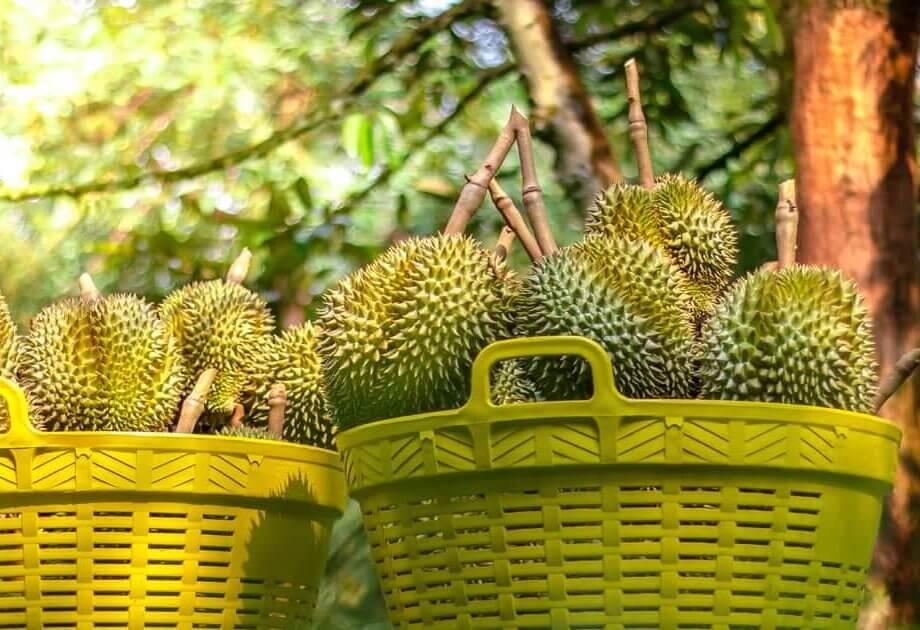Malaysia’s Durian Industry: A New Era of Premium Varieties and Global Ambitions
Malaysia’s durian industry is undergoing a transformation. Once dominated by the iconic Musang King, the sector is now embracing a broader range of premium varieties and leveraging new export opportunities, especially to China. This shift is not only reshaping the country’s agricultural landscape but also redefining Malaysia’s position in the global durian market.
- Malaysia’s Durian Industry: A New Era of Premium Varieties and Global Ambitions
- Why Is Musang King So Famous?
- Emergence of New Premium Varieties
- Innovation Through Hybridization: The MDUR Series
- Export Expansion: Fresh Durians Enter the Chinese Market
- Why Is China So Important for Malaysian Durians?
- Logistics, Certification, and the Challenge of Freshness
- Beyond China: Expanding Global Reach
- Production Growth and Economic Impact
- Cultural Significance and Tourism
- Challenges and the Road Ahead
- In Summary
Driven by surging international demand, particularly from China, Malaysia is expanding its durian cultivation, investing in research and development, and promoting lesser-known varieties alongside its established favorites. The result is a dynamic, competitive industry with ambitions that reach far beyond Southeast Asia.
Why Is Musang King So Famous?
Musang King, also known as Mao Shan Wang (D197), has long been the crown jewel of Malaysian durians. Its bright yellow flesh, creamy texture, and complex bittersweet flavor have made it a favorite among connoisseurs and a luxury item in export markets. In China, Musang King durians can fetch up to RM350 (about US$80–105) per fruit, a price that far exceeds that of durians from Thailand or the Philippines.
This premium status is the result of both quality and branding. Musang King is fiercely protected as Malaysia’s intellectual property, with certification renewed for another decade. Its reputation for consistency, rich taste, and small seeds has made it a symbol of Malaysian agriculture and a must-try delicacy for tourists and fruit lovers alike.
But as demand grows and tastes diversify, Malaysia is looking beyond Musang King to secure its future in the global durian trade.
Emergence of New Premium Varieties
While Musang King remains the benchmark, a new wave of contenders is emerging. Varieties such as Black Thorn (D200), Red Prawn (D175), and Hajah Hasmah are gaining recognition for their unique flavors and textures. The government, through the Department of Agriculture and the Malaysian Agricultural Research and Development Institute (MARDI), is actively promoting these lesser-known types to capture a broader international audience.
Black Thorn, for example, offers a sweeter, custard-like experience that appeals to consumers who find Musang King’s bitterness too intense. Red Prawn is cherished for its reddish hue and smooth, sweet flesh, while D24 (Sultan) and Tekka provide more affordable options with classic durian characteristics. Each variety brings something different to the table, catering to adventurous consumers seeking new taste profiles.
According to MARDI, “Consumers are becoming more adventurous. They are seeking out unique taste profiles. We are also seeing renewed interest in older, established clones such as D24 and Tekka, which are more affordable and offer classic durian characteristics.”
Innovation Through Hybridization: The MDUR Series
Malaysia’s commitment to innovation is evident in its hybridization programs. MARDI has developed the MDUR series, a set of hybrid durian clones designed to combine the best traits of existing varieties. The standout among these is MDUR 88 (D190), recently rebranded as ‘MARDI Super 88’ (MS88). This hybrid, a cross between D10 and D24, boasts a golden yellow color, slightly sticky and creamy texture, and a flavor profile that many compare favorably to Musang King.
Other hybrids, such as MDUR 78 (D188) and MDUR 79 (D189), offer improved yields and greater resistance to diseases like root borers and stem canker. These innovations are part of a broader effort to ensure the sustainability and competitiveness of Malaysia’s durian industry in the face of climate change and evolving market demands.
MARDI’s ongoing breeding initiatives, including a second hybridization program launched in the late 1980s, are expected to yield even more promising varieties in the coming years. Several hybrids are now in the final stages of assessment and are set to be introduced under the 13th Malaysia Plan.
Export Expansion: Fresh Durians Enter the Chinese Market
One of the most significant recent developments is Malaysia’s successful entry into the fresh durian export market in China. Previously, only frozen durians and durian products could be shipped to China. In June 2024, after years of negotiation and the signing of a phytosanitary protocol, Malaysia began exporting fresh durians—including Musang King, Black Thorn, D24, and IOI—to China for the first time.
The inaugural shipment consisted of 40 metric tonnes, distributed in three phases to major Chinese cities such as Shenzhen and Zhengzhou. This milestone was celebrated by government officials and industry stakeholders, marking a new chapter in Malaysia-China agricultural trade.
Deputy Agriculture and Food Security Minister Datuk Arthur Joseph Kurup explained the significance of this breakthrough:
“The export of fresh durians to China became possible after the signing of the Protocol on Phytosanitary Requirements for the Export of Fresh Durian from Malaysia to China. This initiative has proven successful, as evidenced today by the new opportunities it creates for durian entrepreneurs and growers in Malaysia to export their fruits to China.”
Meeting China’s stringent phytosanitary requirements involved implementing pest disinfestation methods, traceability systems, and farm export certification schemes. The list of authorized Malaysian exporters now includes 33 companies with a combined annual production capacity of over 17,000 metric tonnes.
Why Is China So Important for Malaysian Durians?
China is the world’s largest importer of durians, accounting for about 95% of global exports. In 2024, China imported approximately 1.56 million tonnes of durian, valued at nearly US$7 billion. Malaysian durians, especially Musang King and Black Thorn, are considered luxury products and are marketed to high-end consumers willing to pay a premium for quality and freshness.
Malaysia’s fresh durians are more expensive than those from Thailand or the Philippines, but their unique flavors and the country’s reputation for quality have created a strong niche. The arrival of fresh Malaysian durians in China has been a trending topic on Chinese social media, with livestreams of durian openings attracting millions of viewers. Durian-based products—candy, mooncakes, ice cream—are also gaining popularity.
Malaysia’s Agriculture and Food Security Minister, Datuk Seri Mohamad Sabu, highlighted the economic potential:
“God willing, the ministry’s target of exporting fresh durians at the value of RM1.8 billion by the year 2030 can be achieved.”
In 2023, Malaysia exported 54,374 tonnes of durians, valued at RM1.51 billion (US$357 million), with China accounting for nearly half of the total. The volume is expected to rise as fresh durian exports ramp up.
Logistics, Certification, and the Challenge of Freshness
Exporting fresh durians presents unique logistical challenges. The fruit has a short shelf life and is highly sensitive to handling and temperature. To ensure quality, most fresh durians are shipped by air, allowing them to reach Chinese consumers within 24–36 hours of harvest. Packaging solutions have been developed to keep the fruit fresh for up to three weeks, but speed remains critical.
Certification and compliance are equally important. Only companies that meet Malaysia’s Good Agricultural Practices (MyGAP) and China’s phytosanitary standards are allowed to export. This ensures that the fruit is free from pests and diseases and meets strict quality requirements.
Top Fruits, one of Malaysia’s leading exporters, has invested heavily in organic farming and supply chain logistics. The company’s commercial director, Yang Hon Shung, noted the scale of opportunity:
“Last year alone China imported 1.3 million tons of durian, with demand expected to grow annually by 5-6%.”
Hernan Corporation, another major exporter, plans to ship 30,000 tonnes to China over the next five years and is investing in new processing facilities to meet demand.
Beyond China: Expanding Global Reach
While China remains the primary export market, Malaysia is also targeting other countries, including the United Kingdom, Canada, the United Arab Emirates, Australia, and the Netherlands. The Federal Agricultural Marketing Authority (FAMA) is spearheading efforts to expand market access through trade fairs, digital marketplace partnerships, and in-store promotions.
To strengthen Malaysia’s competitive edge, the government is enhancing national branding through the “Malaysia’s Best” certification, which assures quality and safety for both domestic and international consumers.
Production Growth and Economic Impact
Malaysia’s durian cultivation area has expanded rapidly, from 70,286 hectares in 2019 to a projected 92,129 hectares in 2024. Production has followed suit, rising from 390,635 tonnes in 2020 to an estimated 568,852 tonnes this year. Musang King accounts for 36% of production, kampung (wild) durians 38%, D24 11%, and Black Thorn just 1%—though the latter’s share is expected to grow as its popularity increases.
The durian industry has become a “star” driver of Malaysia’s economic growth, especially in rural areas. It supports thousands of smallholders, creates jobs, and generates significant export revenue. The government and private sector are investing in sustainable farming practices to ensure long-term viability amid challenges such as climate change and fluctuating costs.
Cultural Significance and Tourism
Durian is more than just an export commodity; it is a cultural icon. In Malaysia, sharing durian is a social ritual, and the fruit is central to festivals, family gatherings, and tourism. The SS2 district in Kuala Lumpur, known as “Durian Street,” has become a viral hotspot for Chinese tourists, especially since the introduction of mutual visa-free entry policies between China and Malaysia.
Ng Chin Long, deputy secretary-general of the Malaysia-China Friendship Association, captures the spirit of durian culture:
“If you meet a new Malaysian friend, talking about durian is the fastest way to bond. If they invite you to a durian orchard, you should definitely go—sharing durian in an orchard is the beginning of a deeper friendship.”
Social media influencers and livestreamers have played a key role in popularizing Malaysian durians, offering tips on selection, tasting, and even how to remove the fruit’s strong odor.
Challenges and the Road Ahead
Despite its successes, Malaysia’s durian industry faces challenges. Climate change, pests, and diseases threaten yields, while the need for sustainable farming practices is becoming more urgent. The industry must also balance the demands of export markets with domestic consumption and environmental concerns.
Nevertheless, the outlook remains positive. With continued investment in research, innovation, and marketing, Malaysia is well-positioned to maintain its status as a global durian powerhouse. The diversification of varieties, expansion into new markets, and emphasis on quality and branding are key strategies for future growth.
In Summary
- Musang King remains Malaysia’s most famous and valuable durian variety, commanding premium prices in China and other markets.
- New premium varieties such as Black Thorn, Red Prawn, and hybrids like MARDI Super 88 are gaining international recognition.
- Malaysia began exporting fresh durians to China in 2024, marking a major milestone and opening new opportunities for growers and exporters.
- China is the world’s largest durian importer, and Malaysian durians are marketed as luxury products to high-end consumers.
- Logistical and certification challenges are being addressed through investment in supply chain efficiency and compliance with international standards.
- The durian industry is a significant contributor to Malaysia’s economy, supporting rural development and creating jobs.
- Durian is deeply embedded in Malaysian culture and tourism, strengthening ties with trading partners and visitors.
- Ongoing innovation, sustainable practices, and market diversification are essential for the industry’s continued success.




